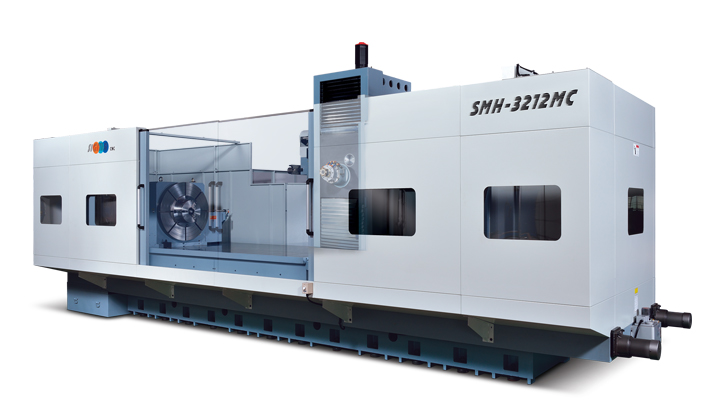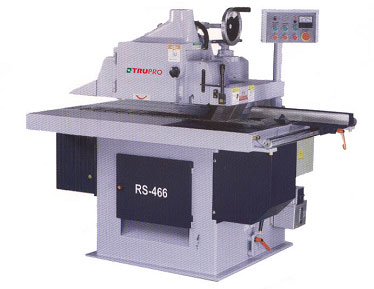In a typical production machine shop, the processing capabilities required can vary greatly between applications: some value power and torque over rpm, others value spindle speed more than torque or power. To ensure the highest level of productivity in all cases, all of these factors must be evaluated when considering a new investment in a vertical machining center.
With numerous different manufacturers of vertical machining centers (VMCs) on the market today, selecting the right VMC for a production environment can be a challenging and stressful endeavor. Each machine is designed and built differently, with unique features and characteristics. The key is determining how each impacts performance.
In order to cut through the clutter to find the right solution, manufacturers must first learn how to effectively evaluate machine performance by understanding key differentiating characteristics. Several factors to consider during evaluation are parasitic times, cutting times, thermal control, machine construction and production support features.
PARASITIC TIMES
Today the average non-cut, parasitic time of a typical production machine shop consumes approximately 30 percent of the machining process. Part designs continue to grow in complexity, with a higher volume and diversity of closely spaced three-dimensional features. In order to minimize parasitic time and optimize production capabilities, evaluation of axis motion and tool-change technologies are critical in the selection of a production VMC.
AXIS MOTION
There are substantial differences in the axis motions of modern VMCs, even when evaluating just the top tier of machine tool manufacturers. We conducted a recent comparison test to evaluate the differences in axis rapid traverse rates of several leading VMCs that demonstrated variations as high as 41 percent. A similar evaluation was given to axis acceleration and deceleration rates, resulting in a 45 percent difference between averaged rates. The Z-axis acceleration and deceleration rates in particular, which are crucial in drilling, pocket milling and tapping operations, resulted in performance variations as high as 75 percent.
TOOL-CHANGE TECHNOLOGIES
The second key factor equally as crucial to parasitic time is tool change. When considering a VMC, manufacturers should examine the full tool change time from the moment the spindle stops to leave the work zone to the point at which it returns to the desired position and speed. While spec comparisons between leading VMCs might indicate minimal differences in tool-to-tool time, a true comparison that includes chip-to-chip time reveals variations as high as 18.4 percent.
In essence, the differences in axis motion and tool-change performance of production VMCs can have a significant impact on a manufacturer’s profitability.
CUTTING TIMES
Alternative to parasitic time is the actual time a vertical machining center spends cutting. With parasitic time consuming 30 percent of the machining process, the remaining 70 percent of the machine process is spent in the cut. Cutting times are generally examined by spindle capability, in which there are three primary factors to evaluate: power, torque and speed.
To ensure the highest level of productivity in all applications, manufacturers considering new investments in VMCs must evaluate all factors with equal importance.
THERMAL CONTROL
Another key factor to evaluate while selecting a vertical machining center is thermal control. Modern thermal-control technologies have made significant advancements in both the productivity and accuracy of machining centers. Some key thermal-control characteristics to consider are spindle warm-up times, spindle growth and temperatures of linear axes.
MACHINE CONSTRUCTION
Additional means for evaluating the accuracy of a vertical machining center would lie in the construction of the machine. Manufacturers should be wary of thin frames, structures with overhangs and unsupported components or motion. Machines with these components can face distortion, deflection, inaccuracy and vibration dampening when machining. Manufacturers should also pay attention to the weight and mass of the machine and how the machine is arranged to provide stiffness, rigidity and ultimately accuracy. If a vertical machining center is not rigid and stiff, the X-, Y- and Z-axis thrust can suffer, resulting in lower positioning accuracy and repeatability.
PRODUCTION SUPPORT
The last key factors for manufacturers to evaluate before investing in a vertical machining center are general production support features, which encompass chip and coolant management, ergonomics and ease of operation.
THE IDEAL PRODUCTION SOLUTION
By evaluating VMCs based on the factors discussed above, manufacturers can ensure the ideal solution for their production environment. Each key factor holds a tremendous impact on productivity, quality, efficiency and ultimately profitability. No two VMCs uphold the same standards, even among market leading machines. In order for manufacturers to see through the clutter, it’s important to keep in mind the factors that will make the biggest impact on their ability to compete globally.
If you are interested in learning more information about vertical machining centers, I can recommend you to visit the website of Victor Taichung Machinery Works. They are Taiwan professional machining center series manufacturer. Kinds of quality lathes all can be found at their company. Try to check out Victor Taichung Machinery Works product category to find machinery you need!
Article Source: http://www.fabricatingandmetalworking.com/2012/01/factors-you-must-consider-when-purchasing-a-new-vmc/



